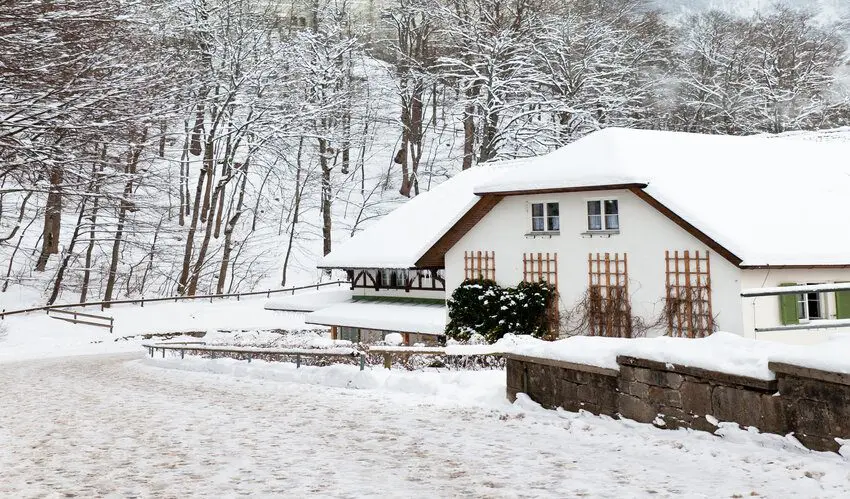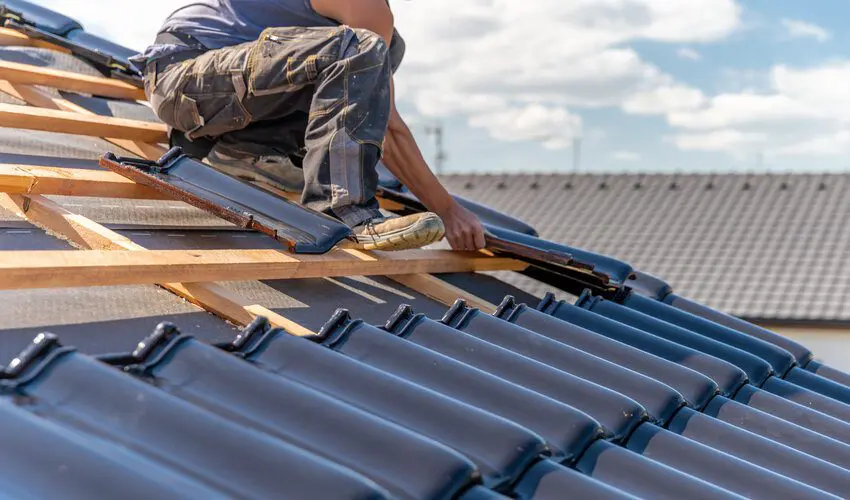Living in a turbulent weather area like Calgary, where recently hail storms have been especially damaging, it’s essential to know how to inspect your roof for hail damage properly. By regularly checking for hail-related damage, you can fix it before it becomes a massive issue requiring a more costly repair.
It’s essential to inspect your roof often, especially after a storm. Understanding what your roof typically looks like and understanding what regular wear and tear look like will help you identify potential future damage. Taking pictures of your roof so you can compare them before and after storms can create a document trail for yourself or any possible insurance claims you make on your roof.
When inspecting your roof, make sure to also look at the gutters! If you examine your roof right after a storm, you can look in the roof gutters to see if they’re full of mineral granules. The mineral granules come off your shingles and can be a reliable indicator that the storm caused some damage to your roof and shingles.
Hail Damage On Asphalt Shingles
Asphalt shingles are among the most common types of shingles used in the Calgary area, so it’s important to understand what hail damage looks like on them. Similar to the technique of checking your eavestrough, you can also search for evidence of mineral granules around your house. Don’t forget to look on the ground, at metal sidings, or the downspouts. Asphalt shingles are coated in mineral granules, so finding lots of them around your roof can indicate your shingles took some damage.
Hail damage to your shingles can significantly shorten your shingle’s lifespan and cause leaks or more extensive issues. If you want to avoid having to replace your roof and undergo a large re-roofing project, keep a close eye on your roof for possible damage is essential.
Telling Hail Damage & Regular Damage Apart
Differentiating between regular roof wear and tear and hail-related damage can be difficult. Again, it’s essential to inspect your roof regularly. By annually inspecting your roof, you’ll be able to identify and learn what regular roof wear and tear looks like. However, there are ways to tell hail damage apart from regular damage.
The three main signs that your roof has been damaged by hail are:
- Missing Granules
- “Bruising” Of The Shingles
- Circular Cracking Or Indentations.
We’ve discussed the loss of mineral granules above, but this is a top indicator that a hailstorm has damaged your shingles. Bruising of the shingles refers to indentations or little dimples in them. You can run your hand over individual shingles to see if they’ve been bruised. Lastly, check for circular cracks or indentations. Hail can create cracks or deep indentations if it’s large enough.
Hail can cause indentations in a teardrop shape due to the velocity and direction hitting your roof. However, it can also create a circular dent. Once your roof has been damaged by hail, it can prematurely age the shingle and cause leaks or further roof damage.
Fixing Minor Damage Early
Catching minor hail damage early is crucial because it can help avoid a more substantial fix down the road. It’s easier to patch small things on your roof rather than have to replace the entire roof. Especially when you’re considering that recent large hailstorms have caused many insurance companies to reconsider covering hail damage on their policies.
It’s also essential to note that while siding and windows are generally covered for hail damage under most homeowner insurance, The Western Financial Group warns that roof damages will likely come with out-of-pocket expenses. Every insurance policy is slightly different, so you need to understand exactly what your insurance covers and any deductibles. Many Calgary roofing companies will be able to help you understand your policy. Just check their track record first and ask for references on dealing with insurance claims.
For example, some home insurance policies only cover roof damage from fires, storms and natural disasters. However, there are conditions to this. If your roof is older than 10 years, they may consider depreciation according to your roof’s location and material. The reason for this is because different areas experience different weather conditions. Calgary is part of Alberta’s hailstorm valley, and thus insurance policies must consider possible hailstorm related damage.
Filing An Insurance Claim
If you find that your house was damaged during a hailstorm, it’s important to start the insurance claim process as soon as possible! You need to note all the damaged areas, take pictures of the damage, and make sure to keep all of your repair receipts. Having regular images of your roof will help build your case against insurance, identifying the hailstorm as the culprit causing your roof damage.
Finding multiple independent contractors to look at your roof and give you a quote can also help you save on your repair cost.
Residential & Commercial roofing. 500+ verified reviews with 5-star ratings (Google Reviews + Homestars)
* No credit card required






